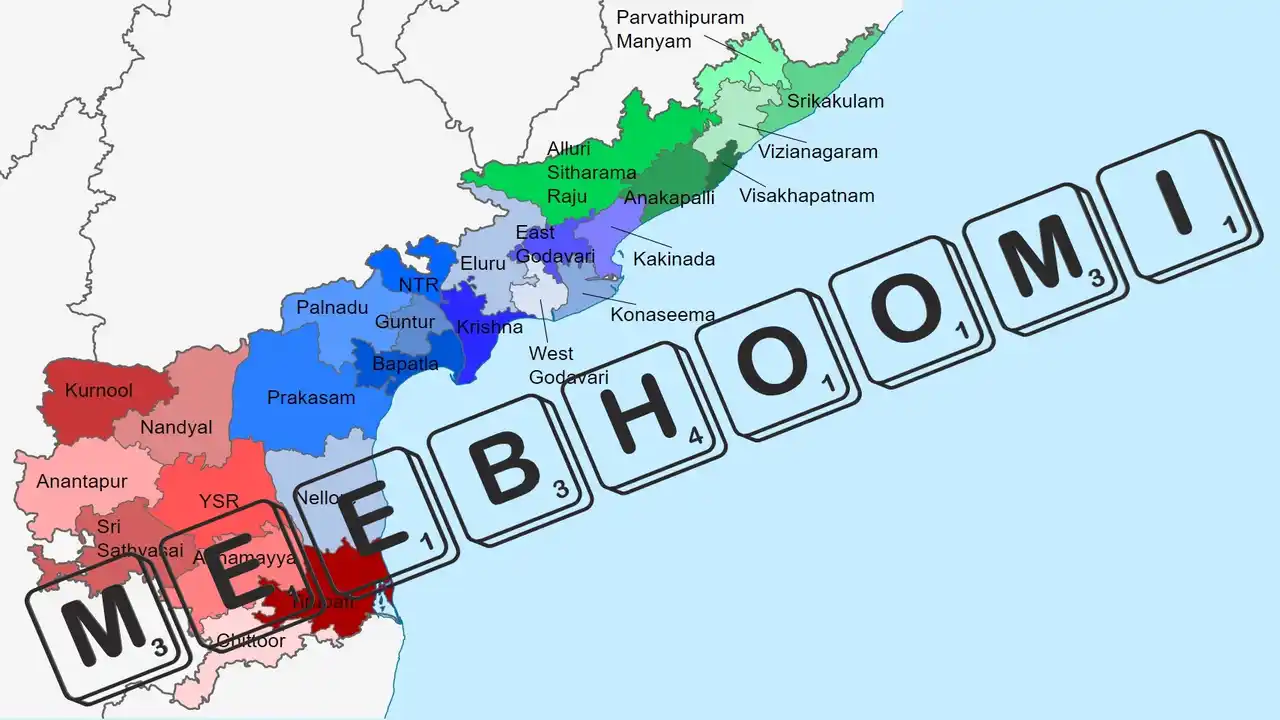The different state governments are helping Central authorities to maintain online platforms providing a vast range of services as internet penetration continues to grow in India. One such web interface is the Meebhoomi 1b backed by the Andhra Pradesh State Government to track records pertaining to land ownership.
By accessing this portal you can check all land specifications, owner details, and liabilities of an estate if it is within the territory of Andhra Pradesh. To learn some unique facts about Meebhoomi land records, keep reading.
What is Meebhoomi AP?
Meebhoomi AP is a registry maintained by the State Ministry of Andhra Pradesh to ensure a corrupt-free upkeep of land records. This portal came into existence in June 2015 and the Department of Revenue plays a vital role in running this facility. The Meebhoomi AP includes a set of extracts like Meebhoomi 1b, Meebhoomi Adangal, etc., that aim to eradicate disputes related to:
- Previous land records
- Nature of possession
- Area assessment
- Soil type
- List of existing liabilities
What is the Meebhoomi 1b?
Meebhoomi 1b, one of the crucial components of Meebhoomi AP, is an extract portraying overall records of a specific plot. The Department of Revenue of Andhra Pradesh reviews and brings changes to this registry from time to time.
This document comes in handy in a variety of situations. For instance, you may be asked to produce this extract while:
- Undergoing a court proceeding
- Applying for a home loan
- Authenticating ownership details in case you are willing to sell an estate
What are Some Lesser Known Facts About Meebhoomi Registry?
All you know by far is that the Meebhoomi portal provides quick access to plot details and related paperwork. Besides fetching these details, you can utilise this online registry for other purposes as well, such as:
- You can download the encumbrance certificates or other related paperwork that is undersigned by rightful authorities.
- The portal provides all details relevant to different Pattas. These specifications are accurate as they are derived from Patta passbook information.
- You get many risk assessment and land surveying services from the Meebhoomi platform.
- Apart from land ownership details, you get information regarding the crops grown, soil type, and source of water.
- This portal has ideal measures to lodge complaints if you notice discrepancies while conducting a title check.
How is Meebhoomi 1b Different from Meebhoomi Adangal?
As mentioned earlier, both of them are separate components that can be accessed through Meebhoomi AP portal. Here are some of their distinguishing factors:
| Point of Difference | Meebhoomi 1b | Meebhoomi Adangal |
|
Ownership | A Tehsildar maintains this registry. | Property owners keep this document to themselves as it records minute details related to a seller. |
| Information shared | It provides information regarding plot type, mortgage status, and also the nature of a land. | Limited information can be traced such as the nature of the plot, land type, etc. |
| Legal Utilisation | This document holds significance while applying for a loan. Additionally, depending on the liability status of a plot, the approvable home loan interest rates can vary. | It has nothing to do with legal and financial proceedings. |
How to Link Your Aadhaar Card to Meebhoomi AP Portal to Check Land Records?
It is mandatory to link Aadhaar details to Meebhoomi portal before checking plot specifications. To achieve this you need to follow these steps:
Step 1: Visit the official website of Meebhoomi and look for the ‘Aadhaar/Other Identities’ option. Upon clicking this button, select ‘Aadhaar Linking’.
Step 2: Continue with filling up each blank space. Here, you must enter the names of your district, city, and village and finally provide the account number.
Step 3: Once you solve the CAPTCHA code, check the consent box and click on the ‘Click’ button to finish your Aadhaar linking process.
What are Some Other Vital Activities That Can be Accomplished Via the Meebhoomi Portal?
Besides retrieving land records for legal affairs, we use the Meebhoomi AP for other reasons as well. These include:
- Checking village map
- Verifying land conversion details
- Finding FMB or Field Measuring Book
- Fetching georeferenced map
Seeing these pieces of information periodically is essential as there can be some minor changes that must be done immediately. If you report any discrepancy and request a change, all necessary modifications get reflected within 15 days.
How to See a Village Map on Meebhoomi?
Here are the steps to watch an updated village map online:
Step 1: After opening the official website of Meebhoomi, click on the ‘Village Map’ tab on the homepage.
Step 2: A fresh page appears on your screen. Put names of the district, zone, and village in the appropriate fields and press the ‘Submit’ button. The village map gets displayed on your device screen.
Similarly, you may also fetch a georeferenced map by clicking on a separate tab displayed at the top of the homepage. Once, you click on the ‘Geo Referenced’ option, you get redirected to the web portal of ‘Bhuvan’, an online facility maintained by ISRO. Here, you can scrutinise a plot using their in-built zoom feature.
How to Verify Land Conversion Details Online?
Again, this crucial data can be easily fetched using the Meebhoomi AP interface. All you must ensure is following these 4 simple steps:
Step 1: Click on the Land Conversion Details tab available on the homepage of Meebhoomi AP website.
Step 2: Enter your location details on the following page; this includes the names of the village, district, zone, and finally the survey number.
Step 3: To see the final results click on the ‘Submit’ button.
How to find a Field Measuring Book on Meebhoomi Portal?
The FMB feature stores data related to measurements of a particular plot. It takes into account the total area within the boundaries of a surveyed plot. If you intend to see these records, you can easily do so by logging in to your Meebhoomi account.
These are the detailed steps to fetch an FMB:
Step 1: Click on the ‘FMB’ tab on the homepage of Meebhoomi AP.
Step 2: On the next page provide all the location details.
Step 3: Provide the CAPTCHA solution and hit the ‘Submit’ button.
Step 4: Now you can see the desired results. However, if you apply for certain changes, you must revisit their portal after 15 days and verify the updated data.
The Meebhoomi 1b initiative is a significant stride taken by the Andhra Pradesh Revenue Department towards the digitisation process. Now, you do not need to run to a Tehsildar’s office to grab important reports as the authorities maintain such village listings online. Therefore, next time you can simply head to the Meebhoomi portal to use these helpful services.







